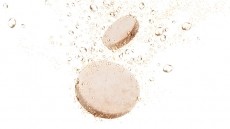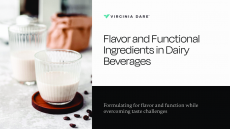Scientists seek methods to reduce acrylamide
a significant source of the potential carcinogen.
The studies, two of the 40 new ones released at a symposium held this month, are part of an attempt by scientists to help processors deal with the acrylamide problem.
At a three-day symposium that ended 23 August in Boston, experts submitted 40 papers on the topic, providing new insights into the compounds and particularly its biological effects.
Some of the studies related to dietary acrylamide and its role in health problems, others dealt with ways to reduce the chemical in the food supply chain.
Acrylamide appears to form as a result of a reaction between specific amino acids, including asparagine, and sugars found in foods reaching high temperatures during cooking processes.
The process is known as the Maillard reaction.
This occurs at temperatures above 100°C (212°F).
Of concern is the discovery by scientists at the Swiss Federal Institute of Technology that the chemical may be produced in dried fruits even under relatively mild temperatures.
The finding will come as a surprise to the industry which has long promoted dried fruits as a health alternative to fresh, as they remain rich in fiber and antioxidants even after treatment.
The Swiss Federal Institute of Technology study found that acrylamide is capable of being formed under relatively mild conditions through reactions that are not fully understood.
Of the different dried fruits tested, the highest concentrations of the chemical were found in dried pears and prunes, the scientists found.
Another study, by researchers from the Instituto de la Grasa in Seville, Spain, found dietary fat found to be significant source of acrylamide in food.
Previous studies have shown that carbohydrates and amino acids, particularly the non-essential amino acid asparagine, are the main chemicals in food that are responsible for acrylamide formation.
The Spain-based researchers say their new study found that high fat levels in roasted almonds may account for as much as half of the acrylamide found in this food and likely accounts for high levels found in other high fat foods.
Although the researchers say they have not yet demonstrated that reducing fat content in foods actually reduces acrylamide, the study provides a new target to consider in efforts to reduce acrylamide formation, they conclude.
A third research study, by scientists at Rothamsted Research and the University of Reading, suggests that farming techniques and biotechnology may help lower acrylamide.
Meanwhile other researchers are experimenting with novel agricultural practices and biotechnology in an effort to help reduce levels of the ingredients that lead to acrylamide formation.
Nigel Halford, one of the scientists, said that increasing soil sulfur levels in wheat crops and reducing nitrogen availability in crops can decrease levels of asparagine, an acrylamide precursor.
The researchers have also produced a new variety of potato through genetic modification that contains lower sugar levels than conventional potatoes.
They are also targeting plant genes responsible for controlling asparagine levels in an effort to reduce acrylamide levels in food crops.
Other studies on the health effects of acrylamide released at the Boston meeting indicate that acrylamide may also play a role in Alzheimer's, due to its capability to damaging nerve cells in the brain.
Another study indicated that acrylamide in foods is not linked to breast cancer in women.
The symposium was organized by the American Chemical Society.
A wide range of cooked foods - prepared industrially, in catering, or at home - contain acrylamide at levels between a few parts per billion (ppb) to over 1000 ppb.
The foods include bread, fried potatoes and coffee as well as specialty products like potato crisps, biscuits, crisp bread, and a range of other heat-processed products.
Acrylamide hit the headlines in 2002 when scientists at the Swedish Food Administration first reported unexpectedly high levels of the potential carcinogen in carbohydrate-rich foods cooked at high temperatures.
Until then acrylamide was known only as a highly reactive industrial chemical, present also at low levels for example in tobacco smoke.
Since the Swedish discovery a global effort has been underway to amass data about this chemical.
More than 200 research projects have been initiated around the world, and their findings co-ordinated by national governments, the EU and the United Nations.












